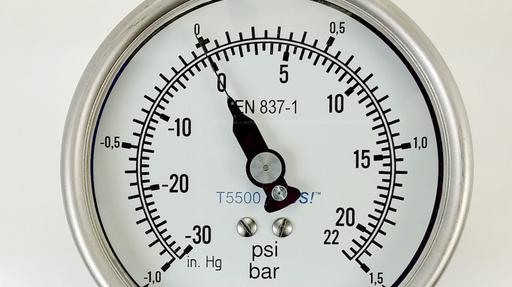Topic outline
-

Faculty of Engineering and Information Technology
Department of Chemical Engineering
Fluid Mechanics
Course no.: 10626231
Credits: Total Credits 3
Course type: Major compulsory
Prerequisites P1: General Physics (I)___________________________________________
Course Contents
This course will provide the student with an overview of key fluid mechanics topics. These topics include fluid properties and pressure measurements. It also covers the flow of fluids, Bernoulli's equation, the general energy equation, Reynolds’s number, laminar and turbulent flow, major and minor energy losses. The course also covers calculations for fluid flow systems and their classes. This course will introduce students to the fundamentals of pump selection and applications.
___________________________________________Course Learning Outcomes (CLO's):
1. Identify and solve fluid mechanic problems including pressure measurements, continuity equation, and Bernoulli’s equation.
2. Identify and solve fluid mechanic problems including general energy equations and energy losses calculations.
3. Formulate and solve fluid mechanic problems related to pump selection and pipeline sizing.
4. Apply engineering design for single pipeline and simple combination of pipes and pumping system to produce solutions that meet specified needs.Textbook:
Mott, R. L., Untener J.A, (2016). Applied Fluid Mechanics. 7th edition. New Jersey: Prentice-Hall.
___________________________________________
-
Forum
-
-
Dear students,
First, I would like to welcome you all to the course of "Fluid Mechanics".
Second, I would like to announce that we will effectively commence the learning process through on-campus classes and online through Zoom (once needed), on Monday, January 30th, 2023. We will be having announcements, discussion forums, and assignments for each topic on Moodle. Never hesitate to add a comment and/or add your query through the messages icon on Moodle.
Let the journey begin and let us enjoy it!!
Stay tuned and kindly notify all your peers.
Amjad El-Qanni
Our Zoom session details:
Note: You will need to sign in using your (najah domain) email.
------
Amjad El-Qanni is inviting you to a scheduled Zoom meeting.
Topic: Fluid Mechanics - Spring 2022/2023
Time: Jan 30, 2022 09:30 AM Jerusalem
Join Zoom Meeting
https://najah.zoom.us/j/91823685271?pwd=NDgrV2hrcnNJZHh4T3NDWUJiVWdQUT0
Meeting ID: 918 2368 5271
------
-
-
File
-
-
-
File
-
-
-
File
-
- Basic concepts: Mass, weight, compressibility, etc.
- Unit systems: SI and US customary systems.
-
- Define dynamic viscosity.
- Define kinematic viscosity.
- Identify the units of viscosity.
- Describe the difference between a Newtonian fluid and a non-Newtonian fluid.
- Describe the methods of viscosity measurement using the rotating-drum viscometer, the capillary-tube viscometer, the falling-ball viscometer, and the Saybolt Universal viscometer.
-
-
- Define the relationship between absolute pressure, gauge pressure, and atmospheric pressure.
- Describe the degree of variation of atmospheric pressure near the Earth’s surface.
- Describe the properties of air at standard atmospheric pressure.
- Describe how a manometer works and how it is used to measure pressure.
- Describe a U-tube manometer, a differential manometer, a well-type manometer, and an inclined well-type manometer.
- Describe a barometer and how it indicates the value of the local atmospheric pressure.
- Describe various types of pressure gauges and pressure transducers.

-
File
-
-
-
File
-
-
-
File
-
-
-
A quantity of interest in the analysis of pipe flow is the pressure drop since it is directly related to the power requirements of the fan or pump to maintain flow.
-
There are two main types of fluid flow - laminar flow, in which the fluid flows smoothly in layers, and turbulent flow, which is characterized by chaotic motion and large amounts of mixing. In this video, Efficient Engineer Channel explores the differences between these two flow regimes. It covers how Reynolds number can be used to predict which flow regime will occur for a specific set of flow conditions. And it will look at laminar and turbulent flows in pipes, and how the flow regime affects the pressure drop in a pipe. It willl also investigate why it is so difficult to simulate turbulent flow, and look at some of the different Computational Fluid Dynamics methods which can be used to simulate it.
-
Irrigation demonstration at Miami Dade College Kendall Campus shows that smaller pipe size diameter causes reduced water pressure. This can reduce irrigation sprinkler head coverage, reduce irrigation uniformity, and reduce efficiency. -
Water pressure is reduced by irrigation flow, especially in too small pipe size. The irrigation designer must use the friction loss chart and the sprinkler head table to estimate flow and pressure loss and select the right size pipe.
-
What factors affect how liquids flow through pipes?
Engineers use equations to help us understand the pressure and flow rates in pipes. Pipe systems are important to us, so it is critical that we can design them to carry the right amount of flow without too much drop in pressure from one end to the other.
-
If you have ever seen flowing water look frozen like glass, that's Laminar flow.
-
-
File
-
-
-
File
-
-
-
File
-
-
-
File
-
-
-
File
-
-
-
File
-
-
-
File
-
-
-
- Chapter 10
-
-

